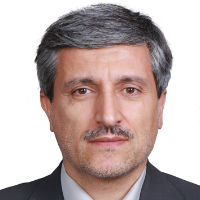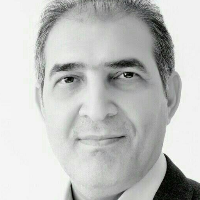Comparative study of Man's position in architecture based on epistemic approach and from intellectual aspect in historical and contemporary mosques of Tabriz metropolis
Author(s):
Abstract:
Islam is a man-oriented religion and it reveals the maxim with various tools. Islams noetic approach towards man so that relies on mans knowledge of Allah, the almighty. Basically, mans intellect conducts him to be Caliph of Allah, thus he is an inestimable creature from this viewpoint. On one hand naturally he needs to worship Allah as a natural and initialized demand; ipso facto he needs to know Him better via recourse to religious texts. But on the other hand his cognition is limited, he cannot fully understand Allah the eternal, thus he needs a tool for knowing Allah based on his limited knowledge. According to Islam, self-cognition leads man toward Allahs cognition; he should firstly know himself and then he know Him better. Firstly, all men require a tool for self -cognition but the second one that is named theology is a natural gift bestowed by Allah. Intellection facilitates cognition but how a lightminded stupid man can know Allah.
It seems that architecture is the most tangible rational tool for theology as a constructive skeletal parameter that helps us to reflect more. This paper introduces the architecture industry as a tool for reflection and better cognition of Allah; intellect is an interface between architecture, self-cognition, and theology. Therefore, architecture is naturally for cognition of religion, and this paper reveals more prominent role of mosque architecture. The paper relies on theoretical bases of the documentary-descriptive approach by emphasizing on the Islamic wisdom and by classifying the mosques of Metropolis city named Tabriz as historical and contemporary mosques. Indeed, architectural parameters and the mosques skeleton are viewed as independent variables but intellection and reflection as dependent variables. Both fieldwork and man are tools used in examinations and testing; obtained results are based on questionnaire, audiences perspectives, and researchers fieldwork evaluation of samples . we studied Masjid Jameh , Seghat-al-Islam, Masjid Kalkatechi , Masjid Ghizli, and Majid Master-Pupil among historical ones but Masjid Angaji, Masjid Amiralmomenin, Masjid Shakelli, Masjid Motahari, & Masjid Molla Reza among the contemporary mosques in Tabriz by selecting the samples randomly. Statistical society are daily users of the research samples, and Likert evaluation tools were applied for replications of randomly selected samples. We implemented quantitative testing but inductive evaluation. Research questions are as follows: 1) How may mosque -architecture be utilized in the sense of intellection and to reasoning? 2) How much is mosque architecture reasoning-based and man-oriented?
Then there are some hypotheses for answering the questions:1) Architecture of mosque is manifestation of implicate science, knowledge to knowledge and it is a suitable tool for intellection.
2) In contrast to the historical mosques, it seems that the contemporary mosques of Tabriz. The metropolis have more effective replications in the field of intellection. we replied the research questions for hypotheses analysis while analysis of users comments prove the accuracy of the first hypothesis. Both fieldworks and software analysis of users comments are indications of architecture capacity for reasoning facilitation. Based on the samples that cover well needed spaces for intellection, reflection is part of presence in mosque; users comments support the idea that religious knowledge is a helpful intellection. Thus. It can be said that mosque and its appropriate architecture facilitate self-cognition and theology where multiplex science and knowledge to knowledge are emanated. The obtained results on the second hypothesis show that according to the findings of religious observations and users behaviors, also based on software analysis of their comments , traditional or historical architectural samples facilitate more successful personal intellection and reasoning. In contrast, generally, architecture of the contemporary mosques seems to be a unique and collective space for intellection even with more desirable performance. But more acceptable that is highlighted is simultaneous processing and resplendence of the third domains of mosque architecture; but final analysis of the research evaluation based on Pearson coefficient, it supports maximum effect of personal intellection and reasoning on its totality. As mentioned before, resultant research findings illustrate more desirable the historical samples for reasoning and intellection based results, then their architectural factors are utilized for better and more acceptable designing procedure of the contemporary mosques.
It seems that architecture is the most tangible rational tool for theology as a constructive skeletal parameter that helps us to reflect more. This paper introduces the architecture industry as a tool for reflection and better cognition of Allah; intellect is an interface between architecture, self-cognition, and theology. Therefore, architecture is naturally for cognition of religion, and this paper reveals more prominent role of mosque architecture. The paper relies on theoretical bases of the documentary-descriptive approach by emphasizing on the Islamic wisdom and by classifying the mosques of Metropolis city named Tabriz as historical and contemporary mosques. Indeed, architectural parameters and the mosques skeleton are viewed as independent variables but intellection and reflection as dependent variables. Both fieldwork and man are tools used in examinations and testing; obtained results are based on questionnaire, audiences perspectives, and researchers fieldwork evaluation of samples . we studied Masjid Jameh , Seghat-al-Islam, Masjid Kalkatechi , Masjid Ghizli, and Majid Master-Pupil among historical ones but Masjid Angaji, Masjid Amiralmomenin, Masjid Shakelli, Masjid Motahari, & Masjid Molla Reza among the contemporary mosques in Tabriz by selecting the samples randomly. Statistical society are daily users of the research samples, and Likert evaluation tools were applied for replications of randomly selected samples. We implemented quantitative testing but inductive evaluation. Research questions are as follows: 1) How may mosque -architecture be utilized in the sense of intellection and to reasoning? 2) How much is mosque architecture reasoning-based and man-oriented?
Then there are some hypotheses for answering the questions:1) Architecture of mosque is manifestation of implicate science, knowledge to knowledge and it is a suitable tool for intellection.
2) In contrast to the historical mosques, it seems that the contemporary mosques of Tabriz. The metropolis have more effective replications in the field of intellection. we replied the research questions for hypotheses analysis while analysis of users comments prove the accuracy of the first hypothesis. Both fieldworks and software analysis of users comments are indications of architecture capacity for reasoning facilitation. Based on the samples that cover well needed spaces for intellection, reflection is part of presence in mosque; users comments support the idea that religious knowledge is a helpful intellection. Thus. It can be said that mosque and its appropriate architecture facilitate self-cognition and theology where multiplex science and knowledge to knowledge are emanated. The obtained results on the second hypothesis show that according to the findings of religious observations and users behaviors, also based on software analysis of their comments , traditional or historical architectural samples facilitate more successful personal intellection and reasoning. In contrast, generally, architecture of the contemporary mosques seems to be a unique and collective space for intellection even with more desirable performance. But more acceptable that is highlighted is simultaneous processing and resplendence of the third domains of mosque architecture; but final analysis of the research evaluation based on Pearson coefficient, it supports maximum effect of personal intellection and reasoning on its totality. As mentioned before, resultant research findings illustrate more desirable the historical samples for reasoning and intellection based results, then their architectural factors are utilized for better and more acceptable designing procedure of the contemporary mosques.
Keywords:
Language:
Persian
Published:
Journal of Research in Arts and Humanities, Volume:2 Issue: 4, 2017
Page:
13
magiran.com/p1722291
دانلود و مطالعه متن این مقاله با یکی از روشهای زیر امکان پذیر است:
اشتراک شخصی
با عضویت و پرداخت آنلاین حق اشتراک یکساله به مبلغ 1,390,000ريال میتوانید 70 عنوان مطلب دانلود کنید!
اشتراک سازمانی
به کتابخانه دانشگاه یا محل کار خود پیشنهاد کنید تا اشتراک سازمانی این پایگاه را برای دسترسی نامحدود همه کاربران به متن مطالب تهیه نمایند!
توجه!
- حق عضویت دریافتی صرف حمایت از نشریات عضو و نگهداری، تکمیل و توسعه مگیران میشود.
- پرداخت حق اشتراک و دانلود مقالات اجازه بازنشر آن در سایر رسانههای چاپی و دیجیتال را به کاربر نمیدهد.
In order to view content subscription is required
Personal subscription
Subscribe magiran.com for 70 € euros via PayPal and download 70 articles during a year.
Organization subscription
Please contact us to subscribe your university or library for unlimited access!




